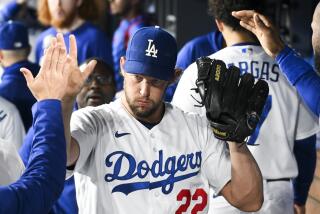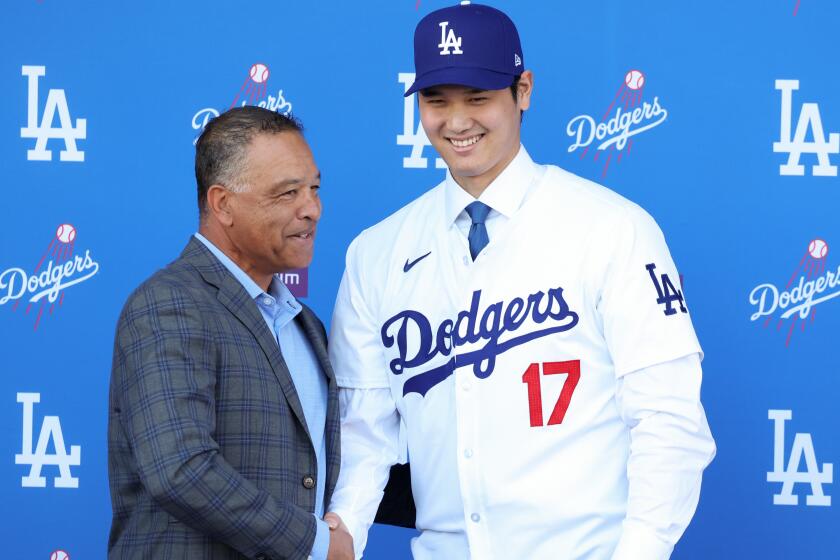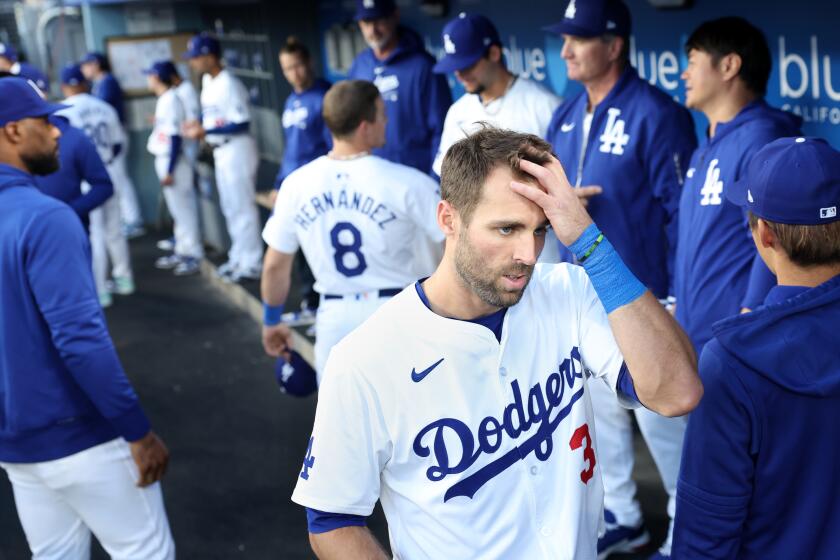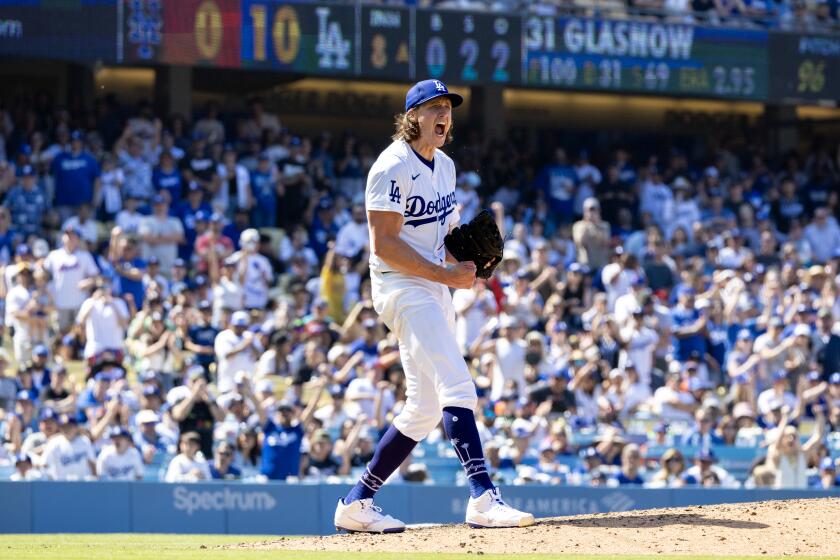Dodgers’ Clayton Kershaw shows pitching virtuosity in Kansas City
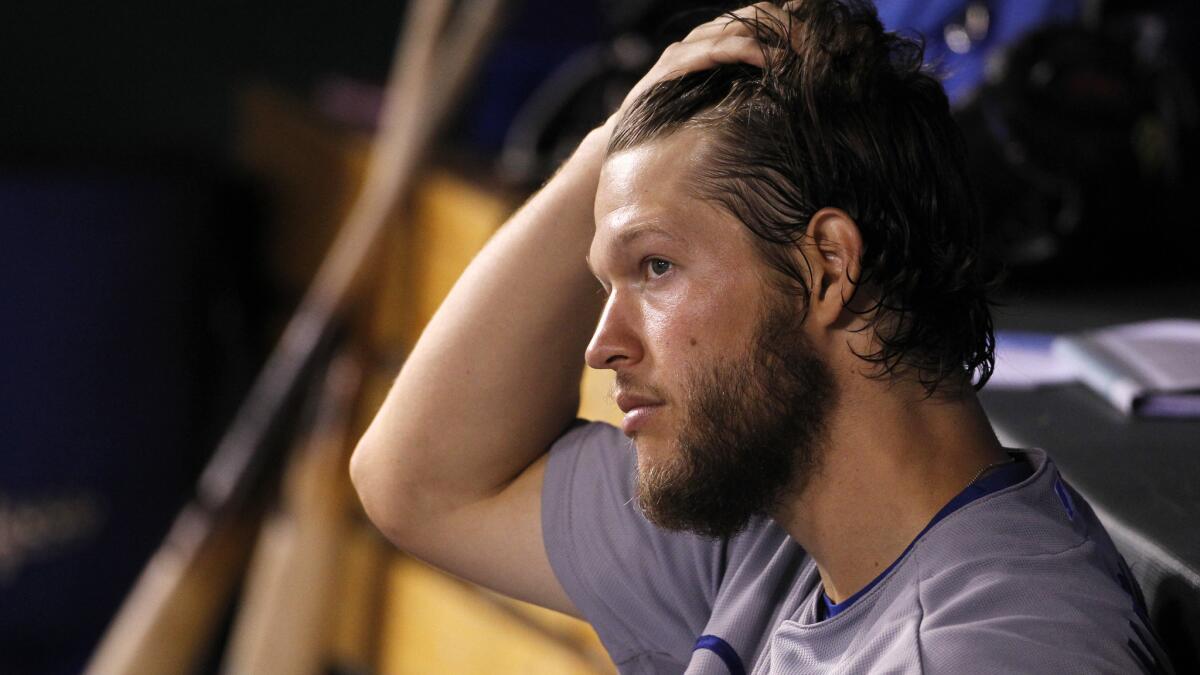
On this night, no one would be sitting on the edge of the seat. In his first start after his no-hitter, Clayton Kershaw gave up a hit to the second batter he faced.
Instead, fans could sit back and appreciate the greatness of Kershaw. On a night when he said his fastball command was “all over the place,” he pitched eight innings in the Dodgers’ 2-0 victory over the Kansas City Royals.
Kershaw never had pitched in Kansas City, in this terrific baseball town starved for a winner. The Royals sold 7,500 walk-up tickets Tuesday, that is, one of every four tickets was sold on the day of the game, when the best pitcher in baseball put on a show.
Remember, this was an off night for Kershaw, in his words. This was his line: eight innings, six hits — all singles — one walk and eight strikeouts. He has pitched 21 consecutive scoreless innings. In June, he is 5-0 with a 0.97 earned-run average – with two walks and 48 strikeouts.
What is so stunning about Kershaw’s success this season is that he has gotten so much better after winning two Cy Young awards in three years, after leading the majors in ERA three consecutive years.
“You don’t want to just shut it down in the off-season and say, ‘Try again next year and do the same stuff,’ ” Kershaw said.
Of his 24 outs Tuesday, 13 came on the ground. For the first time in his career, more than half the outs he gets on balls in play are ground balls. He is throwing the ball lower in the strike zone and is throwing a first-pitch strike seven times out of 10, well above his career norm.
“It’s hard to say a two-time Cy Young Award winner is still evolving into a pitcher,” catcher A.J. Ellis said, “but I think he’s becoming more of that power pitcher, as opposed to that overpowering thrower.
“He’s attacking the strike zone. You get a lot of weaker swings when you are ahead in the count. You have a tendency to get more defensive-type swings. That shows in his strikeout-to-walk ratio.”
Oh, that. His strikeout-to walk ratio is 10.4 to 1. The best in Los Angeles history: Sandy Koufax, in 1965, at 5.4 to 1.
“It’s ironic to me that the big knock on him when he came up was, this guy couldn’t command the ball, couldn’t throw strikes,” Ellis said. “He was almost sent back to the minor leagues due to his inability to go deep into games because his pitch count was so high.
“And now it’s almost to the point where you’re saying, ‘Hey, Clayton, maybe you’re throwing too many strikes?’ ”
Kershaw did not make these changes because he had to, because he had lost velocity on his fastball or the feel on off-speed pitches. He did it to get better, even though the National League could not hit him anyway. Yet, he said this transition was just evolution, not the execution of an off-season plan.
“As far as making a conscious effort to get ground balls or get early outs, no, not really,” Kershaw said.
This is a rather startling transition for a pitcher at the top of his game. Really, what was the game plan?
“Just don’t suck, basically,” he said with a smile.
Ellis talked about how Kershaw would not deviate from his routine even amid the hoopla surrounding the no-hitter, how his dedication and work ethic are so special. Still, players who cannot perform the magic trick Kershaw does to throw his curve ball can be dedicated and work hard.
“It’s a grind,” Ellis said. “It’s 162 games, doing the same thing. As humans and athletes, we’re going to break that pattern. We’re lazy. We’re selfish. We think we can skip it.
“He doesn’t do that.”
More to Read
Are you a true-blue fan?
Get our Dodgers Dugout newsletter for insights, news and much more.
You may occasionally receive promotional content from the Los Angeles Times.



